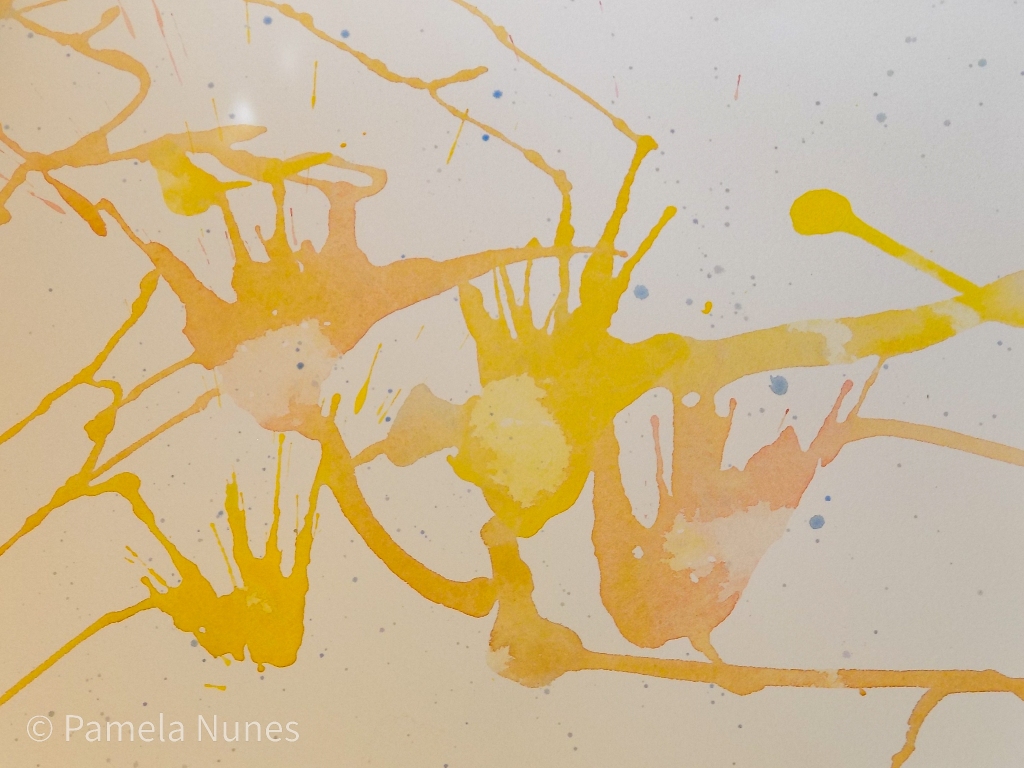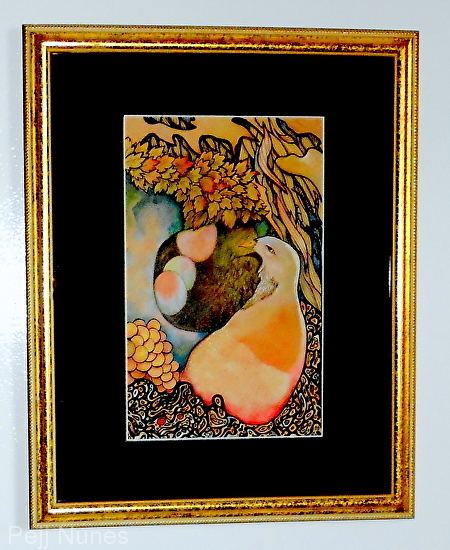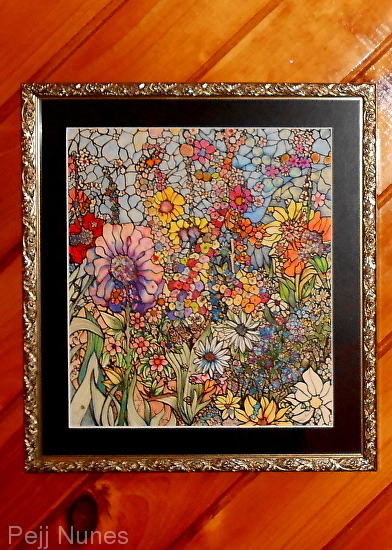What you will find on my blog. There are blogs about Shibui Found Image Art and other topics of interest. Some topics are related to my research on the mind and neurobiology. These topics have to do with their connection with the creative process.

The title of the Shibui Found Image Art (above) which I am seen working is now completed and titled “THE WILDER SIDE OF THINGS”

Shibui Found Image Art’s creative process and development began in 2011 at Anisette Studios (2002).
Shibui Found Image Art will be taught live in the fall of 2023. The launch date for Shibui Found Image Art Labs is to be announced. The reason for the wait is due to relocating and the need to set up my new studio. Maine to Rhode Island!
New student instructors or Shibuiest students are encouraged to contact me via AnisetteStudios@outlook.com. I am available to answer questions.
What is Shibui Found Image Art?
Shibui is always an original art form that has no preconceived understructure because Shibui begins with action art, and then after this part of the process becomes found image art. You simply jump into its creative process. This takes certain concerns a client may have out of the way for those using Shibui. Instead, this makes it a fun problem-solving form of art! Great for therapeutic use! Therapists or instructors using Shibui will learn about techniques, terminologies, and materials. They will learn and if they like share their own branding concepts and plans for their form of Shibui.
One of my certified instructors, Julia Baker-Waite has created her own brand called Shibui called Myuki Shibui Found Image Art.
Shibui Found Image Art has its own creative processes and developmental techniques. I began developing Shibui in 2011. It was not until five years passed that I felt I understood my process of creating and processing the foundations turning them into realistic illusions of art or abstract art. To teach Shibui it needed to be “explainable” for others to understand the process and techniques that they too could elaborate on it and use it!
Instruction includes learning the Field-Event Theory of Philip Carlos Paratore. I learned his theory as one of his students. Other terminologies and techniques are those developed by me.
Chaos to an original art form.
Foundations begin with absolute Chaos! Once a foundation is dried and the finding process begins it is full of potential. this process is very much like finding something in the clouds or a stain. It simply needs believable intentional work. What is found is elaborated through the intentional work. Doing this is the problem-solving stage; it is the transformation of the foundation into an original form of art. A foundation gives up what is found according to the unique creativity of its creator. The mind has been triggered; images that create the story of the found image are found.
Students will be able to understand that foundations have commonalities (relationships) found within the foundation’s field, where events become identifiable “things” (the illusion of something realistic or abstract.)
Once someone becomes a certified Shibuiest of original Shibui or becomes a certified instructor they can teach the foundation or they can create their own brand of Shibui. Shibui is a versatile art form.
Teaching Shibui to individuals who can use it as an original art form, or as an art therapy; courting facilities that use art therapy and with whom you can teach there; be it their clients or therapists, is a wonderful way to help many people mentally, physically, emotionally, and spiritually. Shibui is a powerful tool, and it can generate art-related jobs. For example, it may be that someone is creative, yet can not work doing a traditional job, perhaps they have specific needs that being an artist would work well. Creative people such as artists do not always understand how to treat what they do as a business. It takes time and effort, it takes being consistent. It takes creating a support system, and time to research ideas. It requires the ability to begin and end a project, find the balance, being clear on what it will take to generate revenue streams.
They instruct as Shibui, or court art therapists, and facilities that use Shibui to help their clients. Shibui like all art is an entrepreneurial art-related business. It is versatile. Classes include some business topics such as how to create revenue streams and the importance of a business journal. Julia Baker-Waite plans to take her type of Shibui Found Image Art to cancer patients. Another to the elderly in a nursing home. Another is developing a children’s book project. Others do it as an original art form. What would you like to do with it? Art is wonderful but it is also a business, I advocate learning about the business end of art. Listen to Catherine Orer at: <https://podcasts.apple.com/us/podcast/the-artist-entrepreneur-podcast/id1518318244> What I have done is given Shibui terminology and applicable techniques. An example of necessary dialog is as follows. There is no understructure with a Shibui. That understructure is imagined and completed through the creative process of Shibui. When making the foundation certain things can be done to help the possibilities of the foundation. This said Shibui relies on action art which is always random, and abstract. These work to create the illusion of realism through intention. The action art part of Shibui has commonalities where a whole something or more than one something can be found as the event within the field of spatters, drips, drops, created runs, blotting, bleeding blowing wet medium, and absorbing material impressions.

Regarding my work, please contact me before using my work. I do not give permission with requests.
Foundations begin and evolve.


Once the image has been found, the first steps are to work the found image by doing a “simple line drawing”. What you find may need some help. For example A second wing or foot. This is called intentional work. This is done by adding what is needed to make it work as a whole found object. (This also means creating something different in different areas of the whole image. Because you are drawing what you find, as you find it. It is letting the Shibui tell its own story. This said you will be good at finding things that have relationships. For example, if it looks like fish, something else can be turned into something that lives or is in that same environment. What you have are different areas that may have different kinds of things they can be turned into; but that you can make relate to even in abstract ways.









I find myself falling into designing the shibui image. You will likely know if you get that or any other urge. Just go with it!
You must be logged in to post a comment.